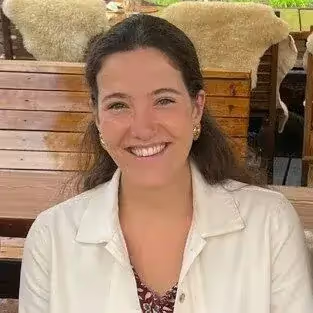Key takeaways
- Adopt sustainable soil practices: Let nature do its job. Growers can also improve their soil health by implementing context-specific regenerative practices.
- Leverage AI and remote sensing technology: Using AI algorithms and remote sensing technology to analyze localized data on farms around the world can increase farm and supply chain resilience.
- Invest in preventive measures: Focus on long-term investments in soil health and prioritize consistent yields from healthy farms to create market stability.
- Encourage financial models supporting regenerative practices: Utilize models like Landler to account for regenerative farming investments as preventative maintenance, improving creditworthiness, future cash flow and the bottom line.
Did you know that the foundation of a healthy supply chain is healthy soil? Unfortunately, this fact doesn’t stop companies from struggling to prioritize investing in regenerative practices. Regenerative agriculture is seen as ‘doing good for the planet’ rather than a smart, financial investment. So, companies only invest in their farms during good years.
Alone, farmers cannot bear the financial burden of implementing regenerative practices. So, they often turn to high yield opportunities at the sacrifice of their soil, leading to an increasingly delicate supply chain, especially considering extreme weather occurrences becoming more common than ever.
To create a resilient supply chain, and resilient farms, we need to shift our mindset when it comes to investing in soil health. There is a notable financial gain and long-term investment opportunities that come with investing in context-specific regenerative agricultural practices.
I’m Tobias Bandel. My regenerative agriculture journey began on an organic farm in Egypt, which propelled me to start my own business supporting companies along the agri-food and textile supply chain to create sustainable operations. Today, I’m a co-founder at The Landbanking Group.
Here’s how we create a more resilient supply chain.
The dream: healthy soil, healthy supply chain
When soil is rich in nutrients and teeming with beneficial microorganisms, plants grow stronger and are more resistant to diseases and extreme weather. This resilience translates into a more stable supply chain, as farmers can rely on consistent crop production year after year.
This stability is crucial for ensuring that food products remain available and affordable.

Actual resilience is not an optimization of input output ratios of macronutrients, but rather enabling soil life to do the job. Practices, such as crop rotation, cover cropping, and reduced chemical use, should be individually tailored toward the farm’s unique soil ecosystem.
With uniquely tailored practices and nature doing its job, farmers experience fewer crop failures and reduced need for costly inputs like fertilizers and pesticides. This lowers production costs and minimizes financial risks associated with unpredictable crop yields.
And these yields allow farmers to better plan their production and supply, leading to more reliable income streams and stronger relationships with buyers.
This is the dream: Nature doing its job to create resilient soils and healthy crops, farmers achieving stable yields, and supply chains with minimal disruptions.

Reality: farms and supply chains are fragile
Today, most farms do not let nature do its job – rather we regularly intervene with practices that, long-term, do more harm than good. We mass prescribe fixes without important context. And the farmers who are doing things ‘the right way’ are being overlooked for cheaper products.
When a plant grows, it gets stimulated by sunlight and releases enzymes through the roots to the soil. By mobilizing organically bound nutrients and giving the plant exactly what it needs by applying chemical fertilizers, the natural process is bypassed. Feeding and putting the plant on drugs disempowers the plant, rather than allowing it to grow within the natural processes.
Our current agricultural system is so receptive to diseases and weather events because we’ve created plants that are basically high-performance athletes. They can run 100 meters but can’t do anything else. Our crops have lost the ability to adapt to a changing environment.
We prioritize high yields over resilience. For regenerative farms to be successful, you have to have an above average, but stable performance. Good, stable, resilient yields are only possible if you have excellent soil health which doesn’t create a dependency on inputs.
And the regenerative agriculture movement can’t offer a general fix because often, regenerative agriculture advice and best practices lack context. Sure, a framework for regenerative farming is helpful. We’ve likely all heard the principals of minimizing disturbance, maximizing cover, living roots, and biodiversity.
But, unique context is needed to achieve resilience on a farm in Iowa, vs. Colorado, or Germany vs. Guatemala. What’s required to support healthy soil includes some general practices but often in a different combination or with slightly different practices for each ecosystem.
Even if you are a farmer who is doing things ‘the right way’ it doesn’t always pay off. I started my professional life on a farm in Egypt. We were an organic farm, biodynamic even, supplying lots of UK and EU brands. They loved us because we were so sustainable.
They gave us tons of audits and questionnaires and promised us if we jumped through their hoops, we’d be their hero.
So we did all this… and were eventually told that although our neighbor is not doing anything sustainable, they’re three cents cheaper. So, they’re going to buy from them instead.
As a supply chain, we’re doing a horrible job of capitalizing on the economic benefits of regenerative farming while asking farmers to jump through hoops that often don’t pay off.
As long as sustainable agriculture feels like a financial sacrifice to stakeholders in the supply chain, it won't scale.
What we can do now that we couldn’t do 10 years ago
We now have remote sensing tools far more capable than we could’ve imagined 10 years ago. They have better sensors, higher frequency measurements, and actual applicable data to the farming context in terms of spatial and temporal resolution.
At The Landbanking Group, we use remote sensing and AI to help us understand complex systems and the interdependencies of all the different indicators. We can look at natural forces like wind speeds, cloud cover, precipitation, temperature; Or, human interventions like canopy agroforestry and see how cropping systems develop from there.
This remote sensing involves using satellite imagery and drones to gather detailed information about soil conditions across large areas. AI algorithms analyze this data to provide insights into soil moisture levels, nutrient content, and potential problem areas.
These technologies enable farmers to make informed decisions about when to plant, irrigate, and harvest, optimizing their operations.
Context-specific analysis leads to outcome-based practices. That was our intention when we created Landler to identify what’s happening locally.
Is there an erosion issue, a fungal disease problem, increasing heat waves, or a combination of these issues? What are the unique interventions that are needed?
While sometimes composting is the answer, sometimes mulching is a more beneficial answer. Sometimes a different approach is a good thing, and we need to understand local context and then come up with a context-specific solution.
If we don’t have outcome-informed practices, we’re just adding cost. This makes a product unnecessarily expensive by using sustainable budgets from practices that may or may not be meaningful.
Additionally, by predicting how soil health will impact crop performance, these tools anticipate supply chain disruptions and take proactive measures to mitigate them. This foresight ensures a smooth flow of goods from farms to markets, enhancing the overall efficiency and resilience of the supply chain.
Our innovative new technology allows us to support growers with the best of both worlds, a common framework for healthy soil with context-specific results in analysis and forecasting. Afterall, resilience is not static or stable, it’s constantly a development process.
The real life application
Say there’s interruptions like a heat wave in India that creates an energy shortage. The lack of cooling for shipping grapes is going to impact harvests. Grapes grown on intensively farmers soils have a high likelihood of developing fungal diseases like botrytis if not cooled properly.
On the other hand, grapes grown in healthier soils have a higher level of disease resistance and are more likely to survive cold chain breaks because healthy plants better manage stressors.
As we note a shortage in grapes, receivers in other parts of the world have a better economic performance because they can plan better without supply chain interruptions. The likelihood of being able to consistently cater to their clients increases.
There’s almost always an extreme weather event taking place somewhere in the world. Supply chain interruptions for suppliers and traders are almost constant. When one supplier underperforms, it puts stress on the entire supply chain. Some organizations pay penalties to retailers if they don’t get their fruit or vegetable shipments in.
If your provider is out of coffee, you’ll have to shop for it elsewhere. While you may have had a fixed price with your original provider, you could face prices that are 20% to 30% higher when you’re forced to shop around.
That reactive cost could’ve been a 15% to 20% proactive investment in your current farm to implement regenerative farming practices.
While you know your original provider’s farming practice, you don’t know anything about this new provider. And if you have strict standards that you share with your consumers and shareholders, it may be hard to impossible to find a farm that can adhere to your standards.
If you settle for just any farm, you could erode trust in your brand.
These aren’t just made up scenarios. This happens all the time. There was recently a steep increase in cocoa prices (hitting a record high of $10.97 per kilogram on April 19) throughout our supply chain. But businesses that had their own regenerative farmers were able to avoid the price hikes and continue business as usual.
The bottom line is that we should invest in farmers implementing regenerative practices to better handle extreme weather, and achieve stable results year after year, to help stabilize our supply chain.
The financials of stability and risk reduction
When it comes to doing ‘good’ for the planet, there’s a feeling of financial sacrifice when it comes to investing in sustainable practices. But, at The Landbanking Group, we know that investing in regenerative agriculture is creating tangible value that’s good for business.
Investing in regenerative agriculture practices reduces procurement risk and increases supply chain resilience. There’s often a cost reduction associated with it.
Any CFO will be quick to point out that paying farmers at scale across major corporations leads to more expensive products… and sometimes can even price an organization out of a market.
That’s where the Landbanking Group comes in. We allow organizations to account for those expenses as an investment in preventative maintenance, and not account for it in their profit/loss calculation. It can be used to improve your balance sheet, creditworthiness, and future cash flow.
With this model, reducing risk isn’t reflective of increasing cost, but rather increasing corporate value.


.avif)


